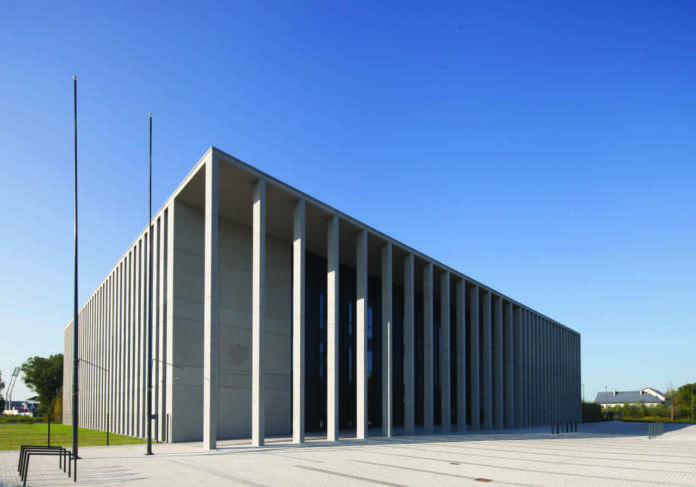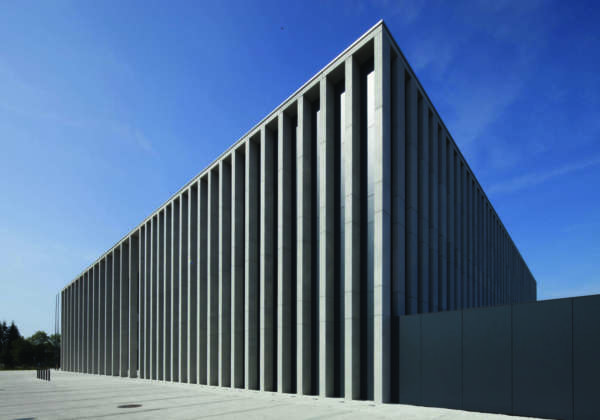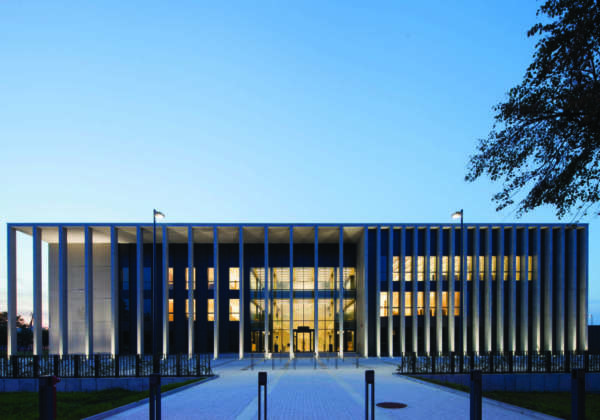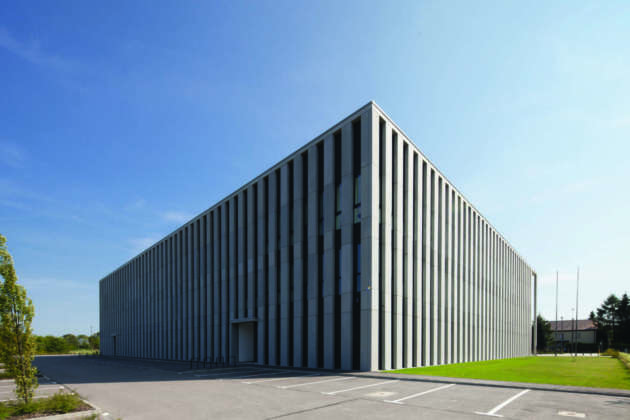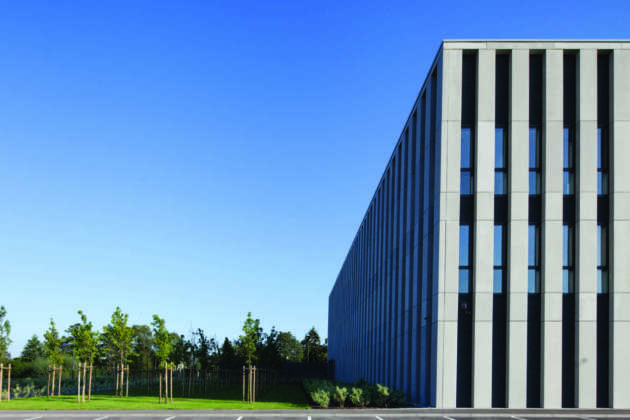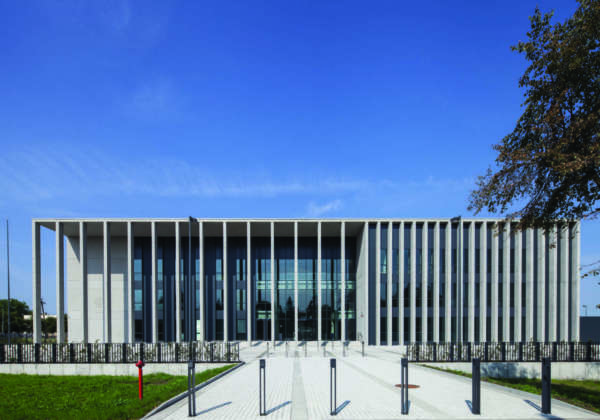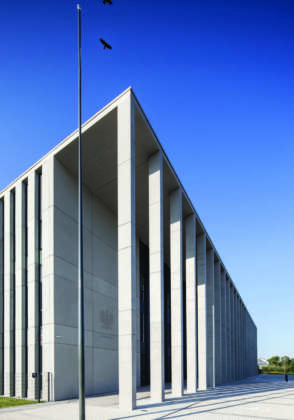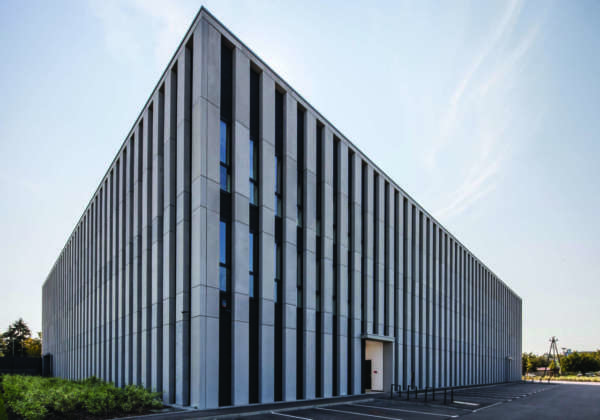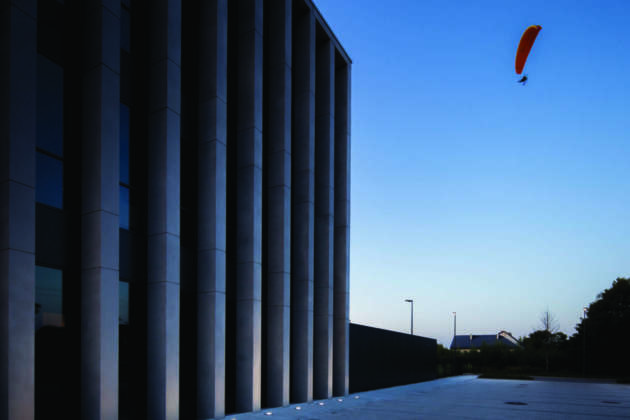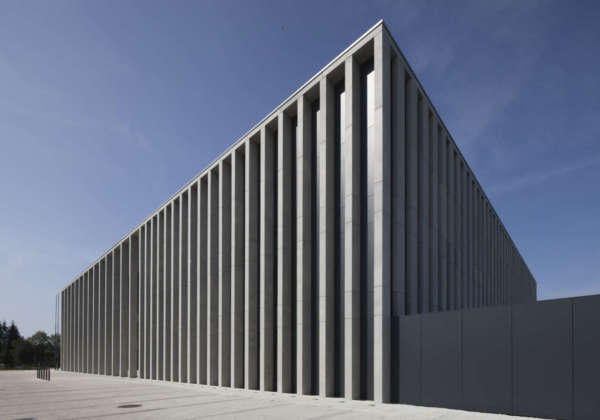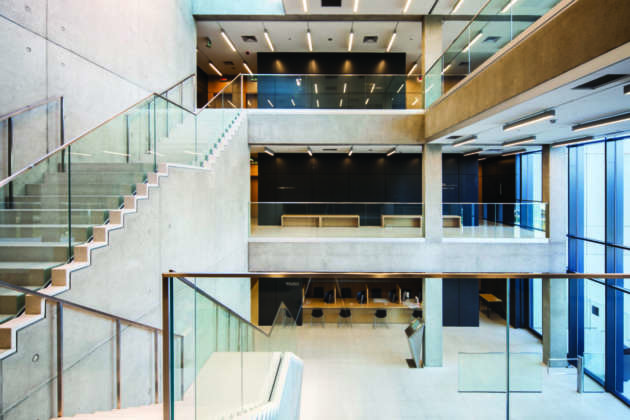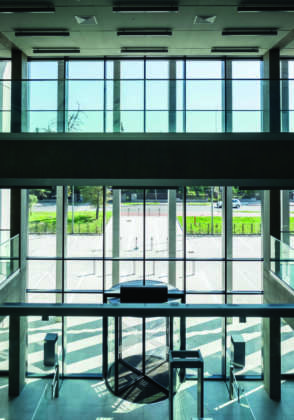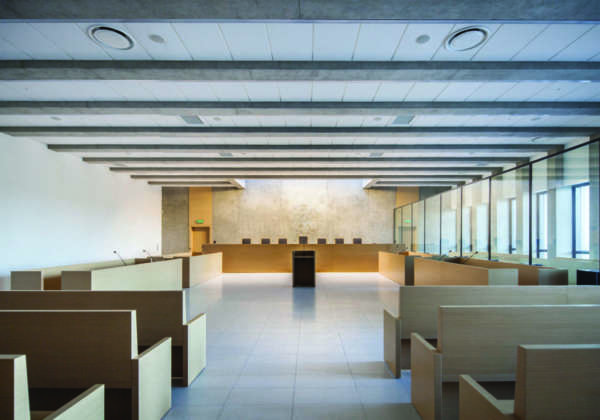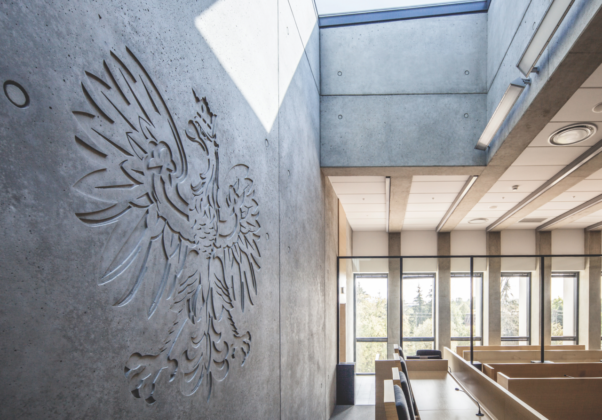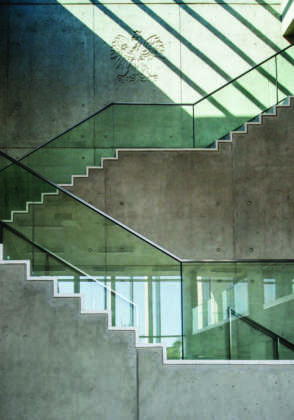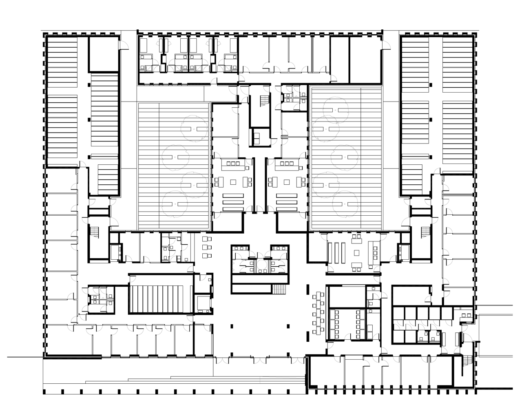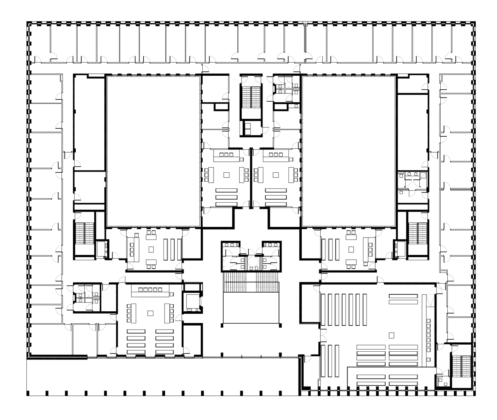In 2018 the completed building complex received the Award of the Association of Polish Architects /SARP/ for the best office/public administration building, built in Poland in 2017. It was also recognized by the Polish Cement Association /acting together with SARP/ as one of the most outstanding buildings utilizing concrete technology, built in Poland at that time. The jury statement described the courthouse architecture as one visibly corresponding with Adolf Loos words “search the beauty in the pure form and do not allow it to depend from the ornament”.
Siedlce is the former voivodeship city, situated in the eastern part of Poland, about 100km from Warsaw. According to Miasto Archipelag /Archipelago City/, the book by Filip Springer, a young polish reporter specializing in architecture, Siedlce is one of the few former voivodeship cities that are noting a small but constant growth despite their status change. The main objective of the project launched by the District Court was to develop a new building which would allow to gather under one roof all the Regional Court departments, scattered before in different localizations around the city.
The Regional Court building complex is situated on a large, rectangular plot, within the area of Nowe Siedlce /the future new district of Siedlce/, at 31A Kazimierzowska Street. The immediate neighbourhood of the plot is defined by detached, single-family houses, low workshops and warehouses and mainly open fields. According to the local masterplan regulations, maintaining the proper setback between the new higher building and the existing lower neighbourhood is crucial in order to give breath and to ensure a smooth transition between the new and the old.
The existing surrounding, missing any binding architectural context, gave us a rare opportunity to design the new building as a complete whole, a new landmark which could become a cornerstone for future district development. Such approach was also shared by the District Court representatives who wished to obtain a recognizable edifice, easily associated with judiciary power. The original level of the plot is elevated by approximately 1m, due to a high groundwater table. The terrace obtained, meeting the level of the adjacent streets, forms a basis for the new representative building and its garden setting.
The three-storey high courthouse building is designed as a single block with facades determined by a vertical rhythm of repeating columns turning smoothly into horizontal divisions of the front square. Main entrance area in a form of a simple, light, corner porch, supported by high, lean, concrete columns, leading to the main entrance, breaks the mass of the cubic volume. Within the block, two internal courtyards, accessible from the employees' parking at the back of the building, provide additional daylight for both public and individual spaces.
The new Regional Court building complex contains 15 courtrooms, including 2 large courtrooms provisioned for the use of the District Court, convoy facility with a bulletproof compartment, a conference room, court files reading rooms, land and mortgage register and court archives as well as office rooms for judges, assistants, curators, referendaries and administrative clerks. A functional arrangement of the courthouse reflects a security division into zones of a varying access level. Rooms dedicated to public use, such as courtrooms, a conference room and court files reading rooms as well as land and mortgage register rooms are accessible from the three-storey high main hall. Vast, open space of the main hall bathed in daylight coming through facade and roof skylight, uncommon for the existing courthouses built in Poland, shortens and simplifies the circulation of courthouse applicants. Office and administrative rooms, covered by an access control system, designed in connection with the main hall are primarily accessible from an employees’ area. The courthouse layout design follows the clear Regional Court guidelines such as the necessity to separate the routes of applicants, judges and defendants and works as a highly efficient machine, but at the same time takes into consideration human scale and human needs. Broad daylight access, extraordinary acoustics allowing to conduct court proceedings without additional sound systems, clear circulation scheme all help to reduce stress of courthouse applicants, an inevitable factor during courthouse visits.
Our main aim of the design was to create a monumental building which would represent the law but at the same time which would remain people friendly. The goal was to design a piece of architecture which would provide timeless relevance referring to the stability and clarity of order and at the same time which would provide full transparency of the process.
The main inspiration for the design was the classical architecture of ancient Greece, the cradle of democracy and the origin of the separation of powers, developed further by Montesquieu in modern times. Not only ideologically. This design is not about the extravagance of form. It was crucial for us that the atmosphere, light and proportions play the main part. In our opinion, when approaching and entering the building one can feel a genuine sense of pure harmony.
The use of architectural concrete, named the modern stone, was one of the most important design decisions. We were looking for a material that would emphasize the monumentality of the edifice as well as a certain rawness. During design works architectural concrete elements were divided into internal ones - cast in situ and external ones - precast at the production facility. The developed design solution enabled efficient execution of the main structure of the building as well as provided optimal quality of façade and pavement elements. Specific features of the two adopted technologies allowed to differentiate visually interior from exterior, linked at the same time by the use of the same material.
Greenery setting surrounding the courthouse softens visually the image of the building and joins the plot with its neighbourhood. Geometrical forms of park plantings correspond with the facades, underline the space divisions and add an elegant character to the layout.
Project sheets
Investor: District Court in Siedlce
Design Team: HRA Architekci Sp. z o.o. Sp. k.
Authors: Wojciech Hermanowicz, arch., Błażej Hermanowicz, arch. Stanisław Rewski, arch. Michał Chrzanowski
Author team: arch. Adam Wojtalik, arch. Krzysztof Hajduczenia, arch. Krzysztof Rewski, arch. Tomasz Laskowski, arch. Anna Kowal, arch. Joanna Orkisz, arch. Elżbieta Hermanowicz, arch. tech. Elżbieta Kozłowska
structure: HUB-BUD Jacek Lipiec
sanitary systems: IS-KWADRAT Sp. z o.o. Sp. k.
design & investment services: Urszula Chruślińska
electrical and telecom engineering systems: JF AMPER
roads: AZET sp. z o.o.
greenery: architekt Krajobrazu Robert Nowicki
acoustics: NOISE-PROJECT Wojciech Odrzywołek, ARCHAKUSTIK Andrzej Kłosak
boq and cost estimates: LB-Projekt Łukasz Brycki
General Contractor: Warmińskie Przedsiębiorstwo Budowlane S.A.


